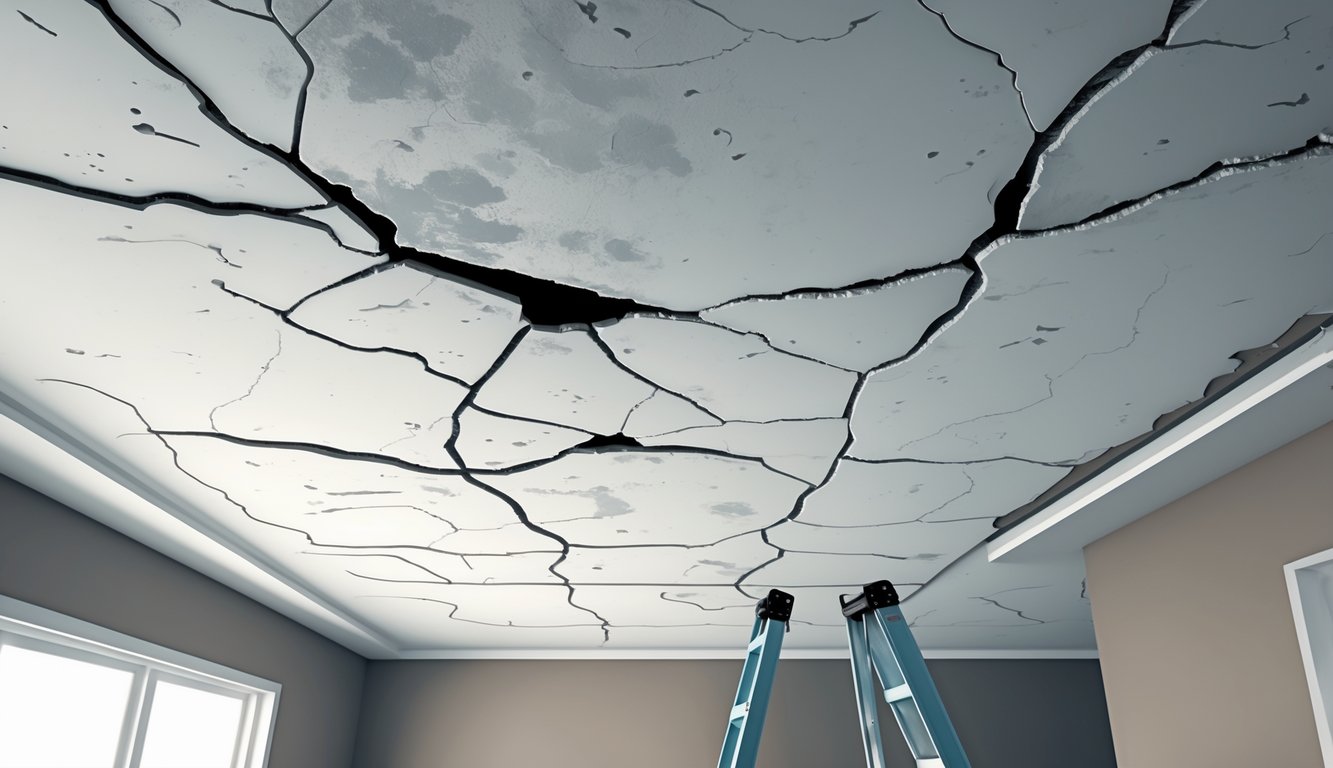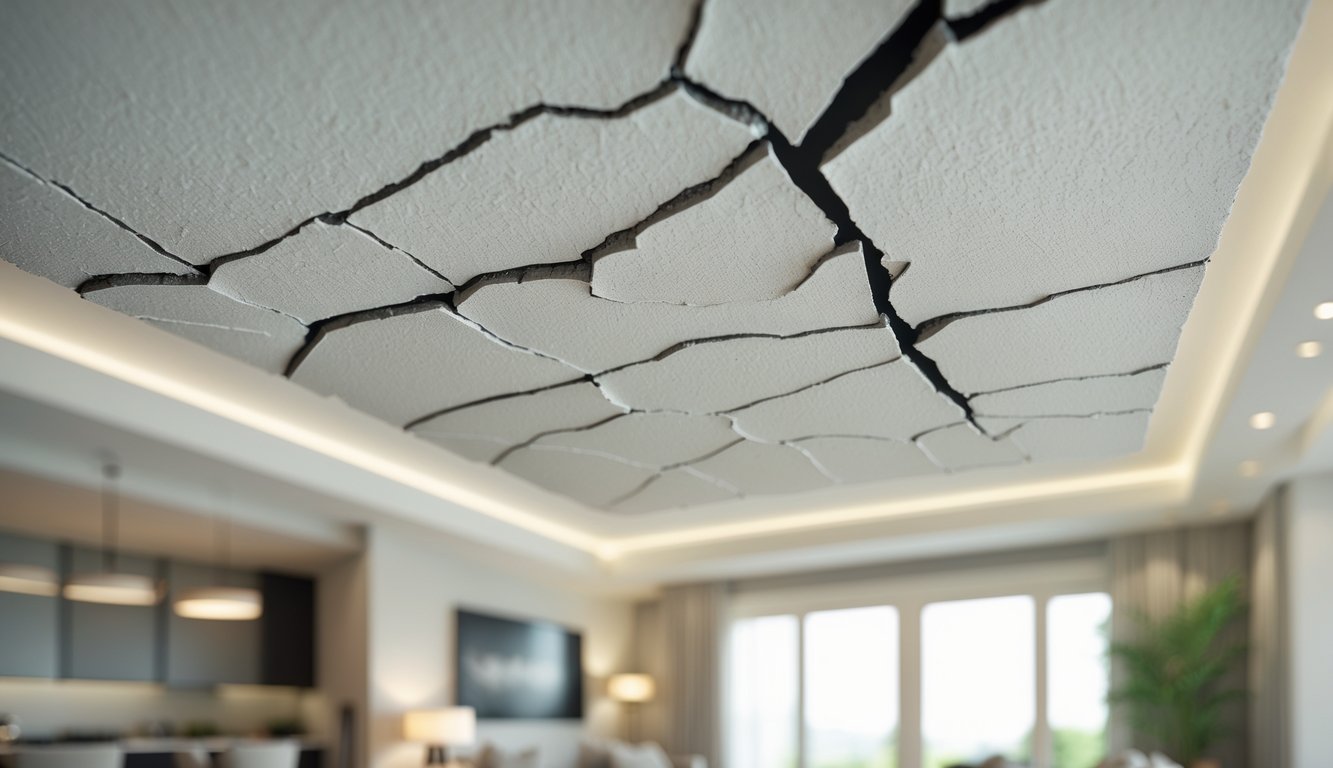
So I’m lying on my couch last Thursday, staring at the ceiling like I do when I’m procrastinating, and I start noticing these weird, twisty cracks. Not just the little ones you get from bad paint jobs—actual patterns, like spiderwebs or those stair-step ones that creep into the corners and make you wonder if the whole house is about to split in half. I mean, everyone online—insurance folks, random engineers, some dude from the Building Performance Institute (who? I don’t know, but he sounded official)—keeps saying that when cracks start doing this, you’re looking at repair bills that’ll make you cry. Why do these things always look harmless at first? You see one baby crack, convince yourself it’s nothing, and then next year it’s a whole network snaking across the room. My neighbors have started throwing around terms like “settlement cracking” at barbecues, and I’m just nodding along, pretending I know what a truss is. (I don’t.)
So I text my contractor friend, expecting him to tell me I’m being paranoid. Nope. He basically says, “If the crack runs straight along a seam, maybe it’s just old age. But if it widens or starts branching out like a horror movie, get ready to spend money.” Love that for me. There’s something low-key terrifying about cracks that stretch into corners or along seams—like, is this the house’s way of flashing a check engine light? My neighbor, who thinks he can fix anything with a YouTube tutorial and spackle, had no clue that deep, wide cracks running toward the walls might mean the foundation’s actually moving. My inspector flagged that once, muttered something about “cost triples if you wait.” Still have nightmares.
And yet, everyone laughs about living with cracks, like it’s some badge of honor for homeowners. But really, if you see cracks connecting or getting bigger, that’s when ignoring it turns into the most expensive mistake of your year. I found this blog post basically screaming: if cracks start forming patterns or get wider, it’s not “just settling.” Wish I’d read that before.
Recognizing Ceiling Crack Patterns
Ceiling cracks. They show up, and suddenly I’m spiraling. I swear, a contractor once told me, “Tiny cracks are nothing—until the ceiling falls.” Comforting, right? I’m not even sure if I believe half the stuff these pros say, but apparently knowing the difference between types of cracks keeps you from fixing the same mess twice.
Hairline Cracks vs. Large Cracks
Every time I spot a hairline crack, I want to ignore it. It’s probably just the paint, right? Or the house settling. Except, and I learned this the hard way, hairline cracks (like, under 1/16 inch) don’t always stay tiny. Sometimes it’s just plaster shrinkage, sometimes it’s a lazy drywall job. You don’t really know.
But if that little line gets longer, or suddenly you can stick a coin in it? Bad news. Structural engineers say cracks wider than 1/8 inch are a problem. (Ask me about the time I tried to ignore that; the repair bill still hurts to think about.) I watched a contractor measure a crack with a plastic card and mutter, “Past this, you’re not patching—you’re rebuilding.” There’s even a guide with pictures if you want to torture yourself.
And here’s something weird: big cracks that run parallel to joists? Sometimes that’s the house telling you the structure’s tired. My neighbor swore his “just got bigger overnight.” For once, he was right. Not every crack is a disaster, but the big, jagged, uneven ones? Your wallet’s going to feel it.
Spiderweb Cracks and Their Implications
Spiderweb cracks. You know, those creepy, radiating little lines that look like a spider got bored. They make me uneasy, especially in old houses. At first, they seem harmless, but if the web grows or you see any yellowish stains around the lines? That’s probably moisture sneaking in, and it’s only a matter of time before you’re dealing with mold or leaks. Expensive mold, too.
Restoration people told me most spiderweb cracks show up in plaster ceilings after a few bad humidity swings. “Ceilings flex, paint stretches, your bank account empties,” is how one guy put it after poking a new crack. There’s a photo guide for spotting those sneaky yellow rings—if you see them, it’s more than just a paint job.
Sometimes spiderweb cracks mean your ancient lath-and-plaster ceiling is giving up, especially if your attic insulation is garbage. Plaster falls, insulation fails, drafts show up, and suddenly you’re living in a cracked eggshell.
Straight, Diagonal, and Horizontal Cracks
Straight cracks, always right where drywall panels meet. Why is it always the seams? My drywall guy just shrugs and slaps on more mud. But diagonal cracks? That’s when I start to panic. Usually means the house is shifting, or the foundation’s doing something it shouldn’t—especially if they show up near corners or where the ceiling hits the wall.
Horizontal cracks are rare, but when they run across the ceiling or near a load-bearing wall, everyone gets jumpy. Inspectors say horizontal or diagonal cracks in ceilings mean the house frame is under stress in some weird way. Cracks that move or bulge mean you need a pro—yesterday.
Wild thing: cracks can start out straight and go diagonal after a bad winter or plumbing leak. I saw my living room ceiling warp after a pipe burst, and suddenly every crack decided to go diagonal. Still makes me nervous every time I spot a new one.
What Ceiling Crack Patterns Reveal About Your Home

Never thought I’d spend an afternoon staring at zig-zag lines in my ceiling, coffee going cold, laundry forgotten in the machine. People act like a little split is just bad luck, but cracks don’t play by rules, and the right pattern can mean your ceiling’s trying to warn you about more than ugly drywall.
Identifying Cosmetic Issues
Hairline cracks along joint tape or straight lines—reminds me of the time I tried to hang a massive mirror with the wrong anchors. (Check your fasteners, or don’t, but you’ll regret it.) Most of these little cracks, especially if they follow seams, are just the house settling. Or so my favorite home inspector’s podcast claims. Seasonal humidity swings don’t care if you run the AC, by the way.
I watched a friend obsess over a tiny web near a light—turned out to be cheap joint compound from a rushed reno. Doesn’t mean you ignore it, though, because if you see moisture stains or yellow paint, suddenly it’s a whole new problem. And no, textured ceilings aren’t immune. If you can wipe it off, cool. If it keeps coming back, check the roof before blaming the painter.
Warning Signs of Serious Structural Problems
Diagonal cracks shooting from corners, or clusters of wide cracks crawling away from the ceiling-wall joint—those freak me out. If you see cracks running across the ceiling and down the wall, stop whatever pointless thing you’re doing and check for sagging or weird bulges. This guide says that’s rarely just settling. Could be beams moving, or something worse. Sometimes it’s the foundation, especially after a wet spring or some freak freeze-thaw cycle.
No one I’ve talked to treats cracks wider than a quarter-inch like they’re nothing. If the drywall flexes or joints open, I just call a structural engineer. Funny how some people keep patching and repainting, thinking they’re saving money, while the real problem—sagging joists, rotten lath, whatever—gets worse. DIYers, take note.
Potential for Costlier Repairs
Still haunted by the time I sat on hold with contractors while a spiderweb crack doubled in size every week. It doesn’t feel dramatic until someone charges triple just to confirm what you already guessed. Repairs go from cheap to ridiculous fast if you ignore the warning signs and just patch over them. Hidden problems don’t care about your paint job.
Every list of expensive ceiling repairs blames moisture, failed insulation, even squirrels in the ceiling. Some guy said his estimate jumped from $250 to $9,000 when the contractor found rotten joists. He blamed squirrels, but who knows. The real mistake? Thinking a little plaster hides shifting beams or actual damage. You patch, then you reinforce, and before you know it you’re gutting the whole ceiling. I don’t ignore weird crack patterns anymore—well, not for long.